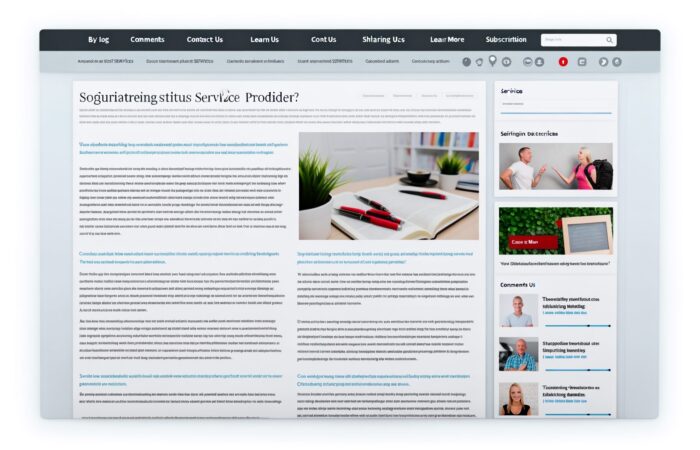The Importance of Tone and Vocabulary in Writing
Have you ever pondered why some writings feel like a warm chat over coffee, while others seem as daunting as a corporate board meeting? Well, a big part of that feeling comes down to two key elements: tone and vocabulary. Let’s dive into why these are not just fancy terms tossed around in a writer’s toolkit but essential aspects that can make or break your writing.
What’s the Big Deal?
Imagine you’re writing a heartfelt letter to a friend. Now, picture crafting a proposal at work. Feels different, right? That’s tone doing its magic. Tone helps convey your feelings and attitudes. It’s the emotional vibe of your words, and it can range from serious and formal to casual and playful.
Now, let’s talk vocabulary. This isn’t just about big or small words. It’s about choosing the right words that your reader will understand and connect with. Ever read something that felt like it was written in another language? That’s probably a mismatch in vocabulary. The words we choose help paint a picture in the reader’s mind. They can simplify complex ideas or enrich a simple message.
Why Should You Care?
- Builds Connection: The right tone and words create a bridge to your readers, making them feel at home with your message.
- Enhances Clarity: Clear tone and appropriate vocabulary mean your audience isn’t puzzling over what you’re trying to say.
- Increases Engagement: When readers relate to your tone and understand your words, they’re more likely to stay hooked.
But it’s not just about making your writing accessible and enjoyable. It’s about being effective! Whether you’re trying to persuade, inform, or entertain, how you say something is often as important as what you say.
Expert Tips Alert!
Here’s what the pros say:
- Know Your Why: Understanding the purpose of your text can guide your tone and word choices.
- Read Aloud: Hearing your text can help catch tone inconsistencies and awkward vocabulary.
- Keep it Real: Authenticity in tone and word choice builds trust with your readers.
So, next time you sit down to write, think about who you’re writing to and what you want to achieve. Your choice of tone and vocabulary isn’t just about following rules; it’s about making your writing resonate and shine. Whether it’s an email, a blog post, or a love letter, the right tone and words can truly transform your message from mundane to memorable!
Identifying Your Target Audience
So, you’re ready to put pen to paper—or fingers to keyboard! But before you dive into the deep end of writing, let’s pause for a moment. Who are you writing for? It’s not just a trivial question; it’s central to how your message will be received. Identifying your target audience is like setting your GPS before a road trip. It determines the direction, style, and even the pit stops of your writing journey!
Why does it matter? Well, imagine talking to a toddler using Shakespeare’s English, or discussing the fine points of quantum mechanics at a five-year-old’s birthday party. Sounds off, right? Knowing your audience ensures your message isn’t just a shot in the dark but a well-aimed arrow hitting the bullseye of engagement and understanding.
How to Pin Down Your Audience
- Demographics: Start with the basics—age, location, gender, education level, and perhaps job type. This helps tailor your language and message. For instance, the choice of words for teenagers can be more informal and trendy, whereas, for professionals, you might opt for a formal tone.
- Needs and Interests: Align your writing with what your audience cares about. A CEO might look for efficiency and ROI, while a tech enthusiast might be more interested in innovation and features.
- Current Knowledge Level: You wouldn’t explain what a car is to a mechanic, right? Understanding the baseline knowledge of your audience helps in pitching your content just right—not too simplistic, not too jargon-heavy.
But how do you gather this info? Sure, you could guess, but let’s not rely on assumptions. Instead, you can:
- Use surveys or polls to gather direct information from your audience.
- Engage on social media platforms to see what topics and discussions your audience gravitates towards.
- Analyze existing data from website analytics to understand who visits your site and their behavior.
Creating Personas: Ever heard of audience personas? These are semi-fictional characters that represent your ideal audience. By creating these personas, you can visualize whom you’re writing for. Maybe it’s “Entrepreneur Eddie,” a 30-something startup owner, or “College Claire,” a 20-year-old student. Personas help in making your writing more personal and relatable.
In essence, identifying your target audience is not about restricting your creativity but channeling it appropriately to connect, engage, and inspire the people you’re writing for. It turns your writing into a conversation rather than a monologue. And isn’t that what every writer seeks—to be heard, understood, and appreciated? So, take the time to understand your audience. Your writing will be all the better for it.
Adjusting Your Tone to Suit Different Audiences
Let’s dive into something that sounds a bit technical but is actually super fun and incredibly useful: adjusting your tone when writing for different audiences. Think of it like switching outfits based on the occasion. You wouldn’t wear your comfy PJs to a job interview, right? The same goes for writing!
Now, adjusting your tone isn’t about changing who you are. It’s about connecting more effectively. Here’s how you can master this skill:
Know Your Audience
First up, who are you talking to? Imagine you’re telling a story. The way you tell it to your best friend might differ from how you’d tell it to your grandmother or a 5-year-old. Each audience has different expectations and levels of understanding. Identifying who your readers are will guide how formal or informal, fun or serious, your tone needs to be.
Setting the Right Tone
Once you know who your audience is, setting the right tone is key. Here are a couple of scenarios:
- Professional or Business: Lean towards a formal tone. Keep it polished and precise. You’re aiming to build trust and show your expertise. Think of it as putting on that sharp suit!
- Casual or Friendly: Here, you can loosen up a bit. Use conversational language, contractions, and maybe sprinkle in some humor. It’s like wearing jeans and a comfy tee.
Flexibility is Your Friend
Being flexible with your tone shows that you’re considerate of who your audience is and what they need from your writing. It’s like being a chameleon, but with words! Say you’re writing for a professional blog but you know your readers appreciate a lighter approach. It’s okay to weave in some friendly lines to keep them engaged without losing the professional touch.
Practice Makes Perfect
And remember, the best way to get better at this is practice, practice, practice. Try rewriting a paragraph for different audiences. You’ll start to see how subtle changes can make a big difference in how your message is received.
Tips to Keep in Mind
Here are a few quick tips to nail down the perfect tone:
- When in doubt, err on the side of being slightly more formal.
- Use examples or analogies that your specific audience will understand.
- Read your writing out loud to see if it sounds like something you would say to your intended audience.
Adjusting your tone isn’t just about being heard—it’s about being understood. By mastering this, you ensure that your writing doesn’t just speak, it communicates. And hey, isn’t that the whole point?
Choosing the Right Vocabulary for Effective Communication
Let’s dive into one of my favorite topics: vocabulary. Not just any words, but the right words. Whether you’re crafting an email, penning your latest blog post, or even texting, choosing correct vocabulary is crucial. It’s like picking the perfect spice for your meal – it can totally transform your dish (or in this case, your message).
When we talk about choosing the right vocabulary, what we’re really discussing is how to connect effectively with your audience. It’s all about making sure your message is not just heard, but also understood and appreciated. Sounds neat, right? Let’s get into how you can do just that.
Match the Moment
Imagine you’re at a fun dinner party. Would you speak in the same way you do in a business meeting? Not likely! Each situation has its own vibe and requires a different set of words. For casual settings, relaxed and friendly words work best, helping you blend in and engage effectively. In more professional scenarios, you’d choose more polished and precise language. Always think about where you are and who you’re speaking to when picking your words.
Keep It Simple
Ever heard the saying, “Keep it simple, silly”? There’s profound truth in that, especially when it comes to communication. Big, complicated words might seem impressive, but they often just make your audience reach for a dictionary, which is the last thing you want. Instead, opt for clear and concise language that everyone can understand. The goal is to be understood, not to show off your vocab skills!
Be Specific
- General vs. Specific: Say you’re writing about pets. Instead of saying “animals,” say “dogs, cats, or parakeets” if those are the pets you mean. Specific words paint clearer pictures.
- Active Words: Active words bring your writing to life. Instead of “The meeting was led by Carla,” try “Carla led the meeting.” Feels more direct and dynamic, right?
Avoid Jargon
Unless you’re sure everyone understands industry-specific terms, it’s better to avoid jargon. It can alienate readers who aren’t in the loop. Always aim for words that create an inclusive environment. If you must use specialized terms, a quick definition can keep everyone on the same page.
Practice Makes Perfect
Improving your vocabulary choice isn’t an overnight success. It’s a practice. The more you write, the better you’ll get at selecting the right words. Read widely, write often, and always keep your audience in mind. You’ll start to see which words resonate and which ones fall flat.
So, there you have it! A little guide on picking the perfect vocabulary for your writing. Remember, the words you choose can make a big difference in how your message is received. Keep practicing, stay mindful of your audience, and have fun with it. After all, playing with words is part of the joy of writing!
Techniques for Adapting Tone and Vocabulary in Writing
Have you ever wondered how the pros manage to tweak their writing style so it feels just right for their audience? Whether it’s a breezy blog post, a serious academic article, or a heartfelt letter, the secret sauce is often in their tone and vocabulary. So, how can you, too, become a chameleon of words? Let’s dive into some practical techniques to help you adapt your writing style like a pro!
Master the Mood Meter
First things first – tone. It’s all about the mood you want to convey. Picture this: you’re writing for a hip new startup versus a venerable law firm. The startup might love a light, playful tone, while the law firm might prefer something more formal and subdued. Reading widely in your target area can help you catch the mood and mirror it in your writing.
Vocabulary Variation
Moving on to vocabulary – think of it as the outfit your writing wears. You wouldn’t wear flip-flops to a job interview, right? Similarly, choosing words that match the expectations of your readers can make a huge difference. For instance, technical jargon might be spot on for a scientific article but could be off-putting in a lifestyle blog. Thesauruses and glossaries are your friends here, helping you swap out words to better suit your audience’s taste.
Listen and Learn
Ever heard the saying, “Listen before you speak”? It applies to writing too. Pay attention to how your audience communicates. Are they using certain slangs or professional terms? Incorporating these into your writing can make it resonate more effectively. Platforms like social media, forums, and customer reviews can be gold mines for this kind of intel.
Experiment with Empathy
Understanding your audience’s emotions and experiences can greatly influence your tone and word choice. For example, empathetic writing can be a powerful approach when addressing sensitive topics. It’s about more than just the words; it’s about crafting a message that feels considerate and respectful.
The Feedback Loop
Finally, don’t fly blind – get feedback! See how your audience reacts to different styles and vocabularies and use this data to refine your approach. Surveys, comments, or even direct emails can provide insightful feedback that helps you better align with your readers’ preferences.
Let’s wrap it up! Adapting your tone and vocabulary isn’t just about swapping a few words or tweaking a sentence; it’s about creating a connection with your audience that feels genuine and engaging. Use these techniques as a guide, but don’t be afraid to add your own flavor. After all, every writer has a unique voice – and that’s what makes your writing distinctly yours.
Common Mistakes to Avoid in Tone and Vocabulary Selection
If you’ve ever caught yourself wondering why your writing doesn’t quite hit the mark, it might be time to look at your tone and vocabulary. It’s like choosing an outfit—what works for a beach party won’t necessarily fly at a formal gala. Let’s chat about some common faux pas people make when it comes to matching tone and vocab with their writing. Grab a coffee, and let’s dive in!
One-Size-Fits-All Approach
First up, the one-size-fits-all approach. Imagine using the same tone in a blog post about ‘funny cat antics’ as you would in a research paper on ‘climate change’. Sounds off, right? Each piece of writing has its own context and audience. Making the error of not tailoring your language to fit these factors can leave your readers disengaged or, even worse, confused.
Overly Formal or Informal
Next, let’s talk about swinging too far on the formality spectrum. Going too formal can make your text sound stiff and alienating, whereas being too informal might come across as unprofessional or flippant. It’s all about finding that sweet spot. For instance, unless you’re writing to a buddy, slangs and exclamatory expressions like “Yo! This thing rocks!” might not be the best choice in a business proposal.
Using Jargon and Complex Terms Unnecessarily
This one’s a biggie. Using jargon or complex vocabulary can seem like a good way to sound smart, but it’s often just the opposite. If your reader needs a thesaurus to get through your content, you’re probably not communicating effectively. Keep it simple, clear, and accessible. Remember, clarity is king!
Ignoring Cultural Nuances
Words and tones can also stumble into cultural insensitivities. What works in one culture may be a no-go in another. It’s crucial to be aware of these nuances to avoid any missteps. For example, humor can greatly vary between cultures and what is considered funny in one might be seen as offensive in another.
Mismatching Tone with the Message
Ever read a solemn topic discussed in a chirpy tone? Jarring, isn’t it? Or a celebratory announcement that reads like a legal document? Equally baffling! Aligning the tone of your writing with the message you’re trying to convey is fundamental. It enhances comprehension and ensures your audience receives it the way you intended.
- Recap: Tailor your tone and vocabulary to the context and audience.
- Strike a balance—avoid being too formal or too informal.
- Keep your language simple and accessible.
- Be culturally sensitive and aware.
- Align your tone with your message.
There you have it! Steering clear of these common mistakes can dramatically improve your writing. It’s all about practicing and getting feedback. So, keep writing, keep refining, and watch your words make a real impact.
Evaluating the Impact of Your Writing Tone and Vocabulary
Let’s talk about something crucial in writing that often slips under the radar—evaluating the impact of your tone and vocabulary. Have you ever wondered if your words really click with your audience? Or maybe, how your tone affects the way your message is received? It’s like being a chef; even if you follow the recipe, the real test is in the tasting!
So, how do you figure out if your writing is as scrumptious as intended? Here are some friendly pointers to help you evaluate the impact of your writing effectively.
Gather Feedback
First and foremost, feedback is your best friend. Whether it’s from peers, mentors, or your audience, getting reactions can give you invaluable insights. Don’t just settle for “it’s good” or “it’s okay.” Encourage detailed feedback. Ask questions like:
- “Did the tone of the piece make you feel comfortable and engaged?”
- “Were there any words that seemed out of place or confusing?”
Re-read and Reflect
After a bit of a break, read your piece again. With fresh eyes, you’ll be more likely to notice if the tone feels too formal, too casual, or just right. Ask yourself:
- “If I were the reader, would I feel talked down to or spoken to respectfully?”
- “Does my vocabulary align with what my audience needs and understands?”
Check Engagement Levels
Here’s where analytics can play a part, especially online. Platforms often provide engagement metrics like time spent on page, comments, likes, and shares. High engagement usually suggests your tone and vocabulary are hitting the mark.
Look for Patterns in Feedback
If you’re consistently receiving similar types of feedback, there’s likely a pattern. Identifying these can help you tweak your approach. For instance, if multiple readers are finding certain jargon perplexing, it might be time to simplify your language.
Experiment
Don’t be afraid to tweak your tone and vocabulary and see how these changes affect reader response. Writing is as much art as it is science, and sometimes, you need to paint with different colors to see what truly resonates.
Remember, the goal isn’t just to write; it’s to communicate effectively. By evaluating the impact of your tone and vocabulary regularly, you’re not just guessing what works — you’re learning and adapting based on real interactions. This not only makes your writing better but also makes it a joy for your audience to read. So, keep at it, and let every piece of feedback sculpt your masterpiece!











No Comment! Be the first one.